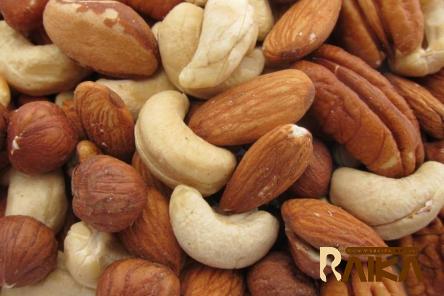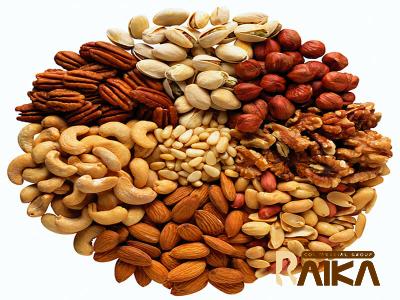Peanuts allergy rates by country and comparison between some of them
In this article, peanuts allergy rates by country are supposed to be compared
Peanuts meaning
Here we are about to make a comparison between some of them, and see which country has the most severe statistic
The United States is now the location of an epidemic
A hypersensitivity to peanuts In the years between 1997 and 2008, there was a significant increase in the number of children in the United States who suffered from peanut allergies
It is estimated that there are 1
8 million children in the United States who have one today
That is more people than are now living in the entirety of Philadelphia
In addition to this, the United States is not alone
In children, peanut allergies have been found to be increasing at rates that are comparable in the United Kingdom, Canada, and Australia
On the other hand, countries such as China, Thailand, Korea, the Philippines, and Kuwait are not included in this group
In that case, what do these other countries have that the United States of America does not?
Abba, which is the term for father in Kuwaiti Arabic, ba, which is the word for mother, and Bamba are the first three words a child in Kuwait ever learns
read more: Amazing peanut butter
The name “lamb” refers to a popular peanut snack
Typically, ninety percent of households in Kuwait will purchase it
And other that, any guesses?
Peanut allergies make up only one tenth of the total number of reported allergic reactions in Kuwait
In addition, peanut rice porridge is a popular option for children’s morning meals in China as well as in Thailand
And how do you account for that?

Peanuts benefits
For the other half, it was strongly recommended that they abstain from eating peanuts under all circumstances
After that, when the children were 5 years old, they participated in yet another experiment
It was suggested that everyone consume some form of protein derived from peanuts
A peanut allergy was found in 3
2% of the children who had been eating peanut snacks on a regular basis since they were babies
On the other hand, the circumstance was made a great deal more difficult for the children who avoided peanuts
Over seventeen percent of them claimed an allergy to nuts, despite the fact that they had never eaten nuts before
This indicates that, in comparison to children who routinely consumed peanuts, they had a risk that was six times higher of developing an allergy to peanuts
Obviously, this is only one piece of research out of many
On the other hand, if one understands how allergens function, this makes perfect sense
read more: red skin peanuts
As a consequence of this, when the individual in question consumes peanuts again, their antibodies will activate an immune response, which will result in an allergic reaction
The reason why some people have responses while others do not is something that scientists do not completely grasp
They do believe that providing assistance to neonates who are at risk at an earlier stage might be beneficial

Peanuts nutrition
The children’s immune systems did, in fact, adapt to the powder, and the vast majority of them were able to develop resistance to it
By going through this desensitization process, the immune system is led astray
In addition, it has the potential to be utilized as a treatment for children who have a peanut allergy as long as it is administered correctly and with extreme caution
Even though the early results of these therapies have been encouraging, they are not a cure for the disease
In addition, a few of experts believe that genetics may have anything to do with the development of allergic reactions
Therefore, see a doctor make sure you’re safe before taking matters into your own hands and starting to give your newborn peanuts
In the end, just like with everything else in life, peanut consumption should be moderate
Let’s look at a few specific food allergies with worldwide variations
The prevalence of fish allergy is higher in countries like Scandinavia, Norway, Portugal, and Japan which consume a lot of fish
Shrimp allergy is rather common in Iceland and Spain, although it is almost nonexistent in Bulgaria and Poland
The top eight allergens in the US do not include sesame allergy
However, Kuwait, where the use of sesame is substantial, is where it is most common
read more: peanuts health benefits

Peanuts calories
In fact, among Kuwaiti children, milk, eggs, and sesame are the three most common food allergies, and sesame is the second-leading contributor to anaphylaxis after milk
One of the foods least likely to cause an allergic reaction in the United States is rice, even though rice allergy is uncommon in most other countries
Consequently, rice cereal is frequently served to infants as their first diet
But in rice-eating countries of Eastern Asia, like Japan, rice allergy is very common
People who are sensitive to rice may have an allergic reaction while eating rice or breathing in rice pollen
Peanut Allergy: Peanut allergies are uncommon outside of western nations like Kuwait, the United States, and the United Kingdom
For instance, peanut allergies are almost unheard of in Greece
This may be partially explained by the different rates of peanut intake in different countries
Consumption habits, however, may not entirely account for regional variations in the frequency of peanut allergies
Although eating peanuts is very popular in Indonesia and parts of Africa, peanut allergies are very rare in these places










